Little, strong Utsira – life in Norway’s smallest municipality
When a young Julie Faldt Faurholt moved from Denmark’s smallest municipality – the island of Læsø – she was determined she would never live in such a small place again. But the island she lives on now is far smaller. With 217 people, Utsira is Norway’s smallest municipality.
There are a few of us waiting. There is a fierce wind at the Garpaskjærskaien ferry quay in Haugestund. The municipally owned ferry Utsira arrives. It is a bit early thanks to the tailwind. The journey usually takes 70 minutes across the sea. The ferry docks and lets off passengers and cars.
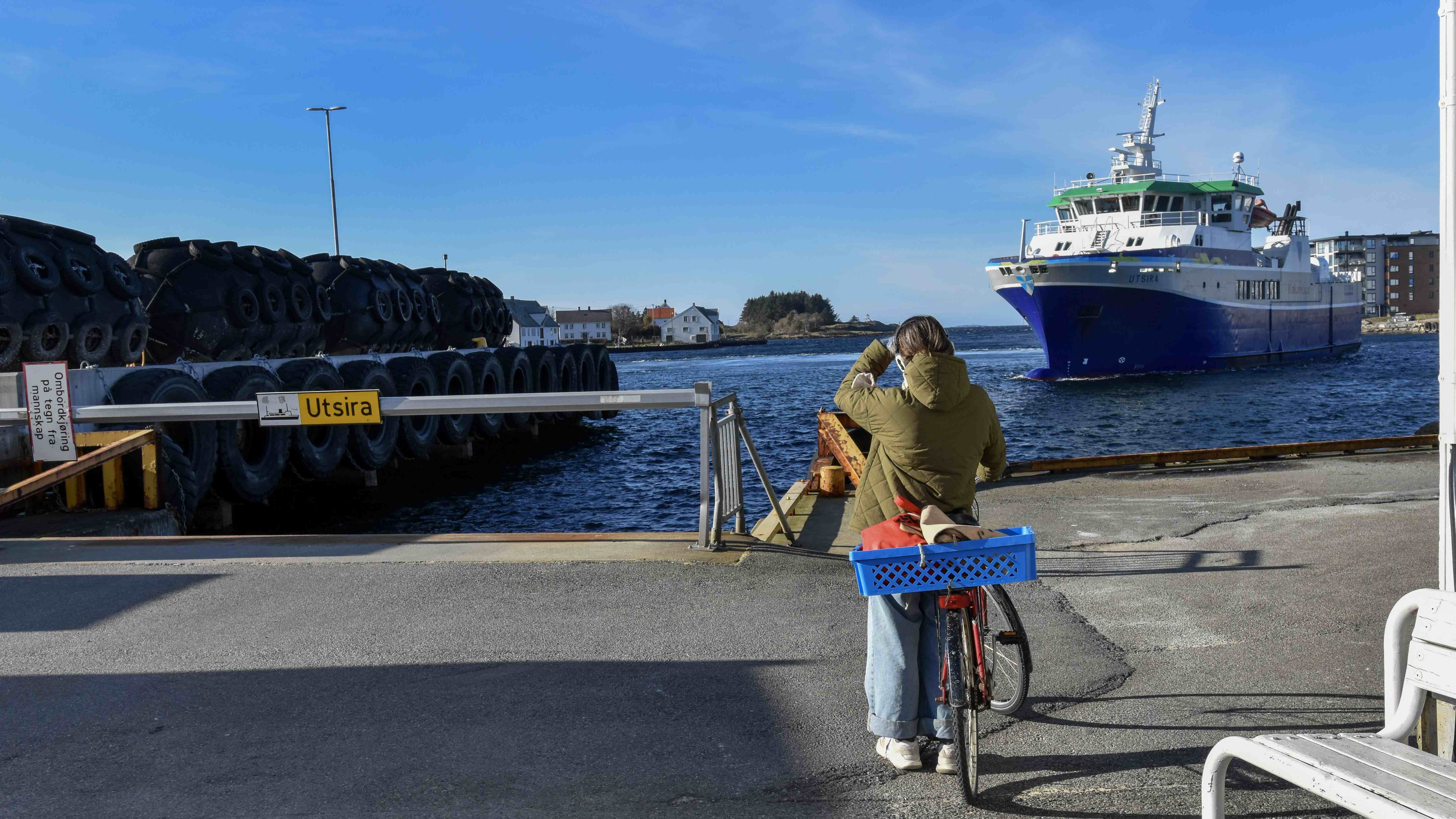
The Utsira ferry is municipally owned. It is soon docking for the last time. A new electric ferry will replace it.
We embark. Our little group is headed to Norway’s smallest municipality.
Despite sunshine from a cloudless sky, not many tourists are heading to Utsira this Sunday. The weather forecast provider Yr has promised gale-force wind gusts. It keeps people away.
But not the ferry. It runs in nearly any weather. The inhabitants on the island out in the open ocean experience total isolation only a few days a year. The municipally owned ferry is soon to be replaced by the new, electric Utsirabåten. It will cut emissions considerably.
But will the electric boat be as loyal to the inhabitants? Will it withstand the rough winter storms as well as the current ferry?
Second smallest in size
We dock on the north side, in Nordevågen. This is the ferry’s regular port. But a strong north north-westerly wind can force it to dock at Sørevågen. The distance between the north and south ends is less than two kilometres.
Children on Utsira learn about the cardinal points at an early age. People living in the old fishing community still navigate by what lies north, south, east and west. Ask children in the kindergarten or pupils in the schools what they want to be when they grow up, and most still answer farmer or fisher.
Utsira municipality is Norway’s smallest per capita and the second smallest in size. It is 6.32 square kilometres.

Utsira lighthouse is one of several tourist magnets on the beautiful island. Visitors can also stay at the lighthouse keeper's house.
A sign carrying the municipal coat of arms and the text Utsira municipality stands on the quayside. The coat of arms is a cross with four opposing points in silver on a blue background. The design is inspired by the beams from a lighthouse.
Today, Utsira lighthouse is the highest situated lighthouse in Norway, 78.2 metres above sea level. It was built in 1844 and decommissioned in the autumn of 2004. It is now a popular tourist destination and it is also possible to spend the night in the lighthouse keeper’s cottages.
“The record municipality”
Utsira became a separate municipality in 1924. At the first local elections in 1926, 11 of the 12 elected representatives were women. Aasa Helgesen became Norway’s and Europe’s first female mayor and remained in the post for two years.
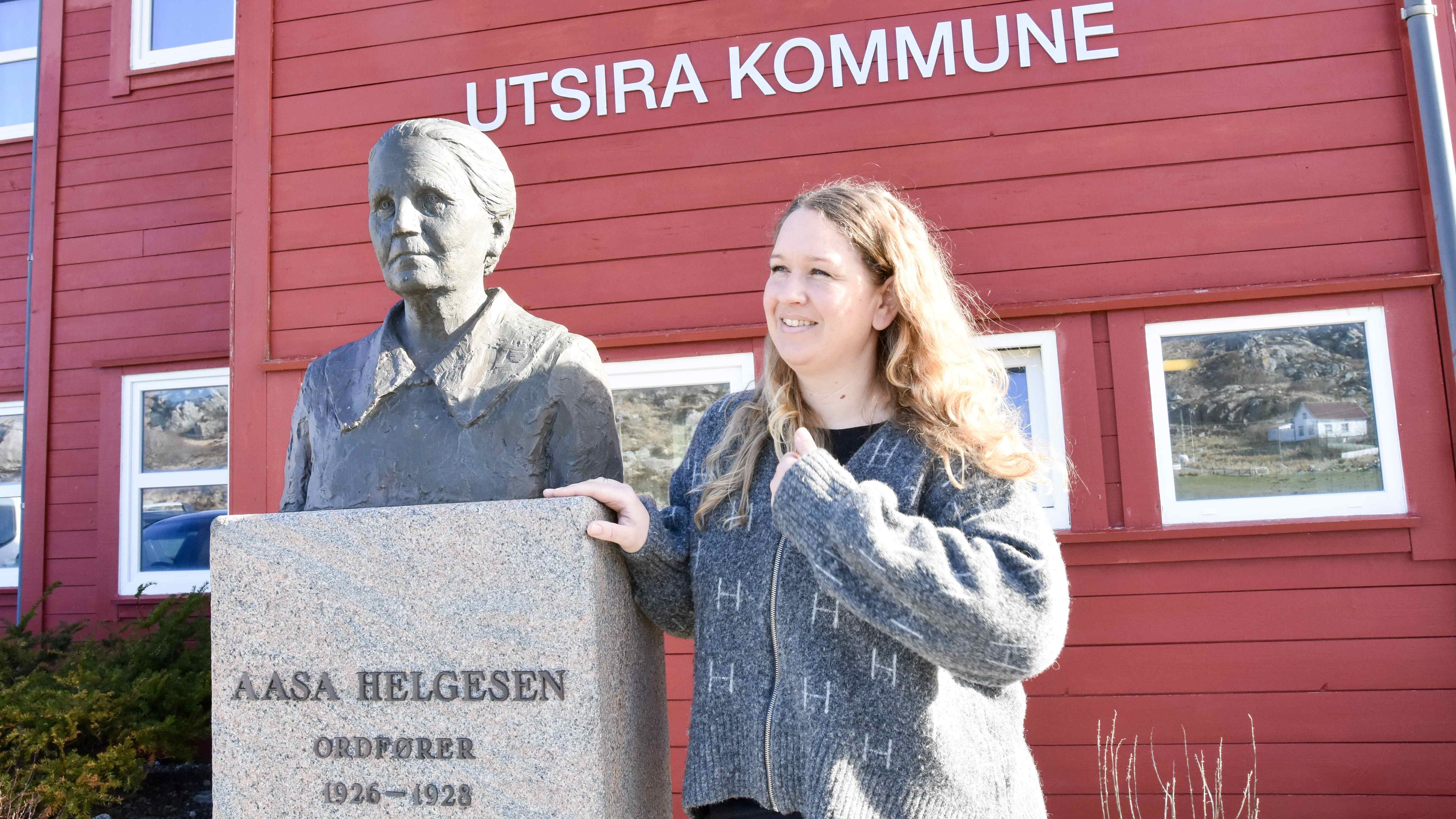
Marte Eide Klovning is in her 12th year as mayor of Utsira. If she stays a few more years, she will be the municipality's longest-serving mayor.
A statue of Helgesen outside the town hall welcomes people on a Monday morning.
When Utsira makes the news, it is often in terms of being “smallest, first, largest, at the bottom or on top”. The municipality is for instance “always” first to proclaim results in a general election.
“We get a lot of attention. It gives us a voice,” says Marte Eide Klovning, the current mayor. Eide Klovning was elected to the council in 2012, became mayor before turning 29 and has now had the job for nearly 12 years.
She represents Utsiralista. The council counts 11 representatives, the executive committee has five.
“Engagement for the island and the municipality is more important than party politics. The local engagement is what drives you, not national politics,” she says.
Eide Klovning is a Labour member and a deputy MP.
Must deliver for residents
There is coffee and chatting in the mayor’s office at the municipal hub called Siratun. The administration shares the localities with the library, GP and the Sirahallen sports centre and pool.
Library director Hildegunn Eek went for a swim before work. While many Norwegian municipalities’ economy is so bad that they struggle to fill their pools, the one on Utsira is open 24/7.
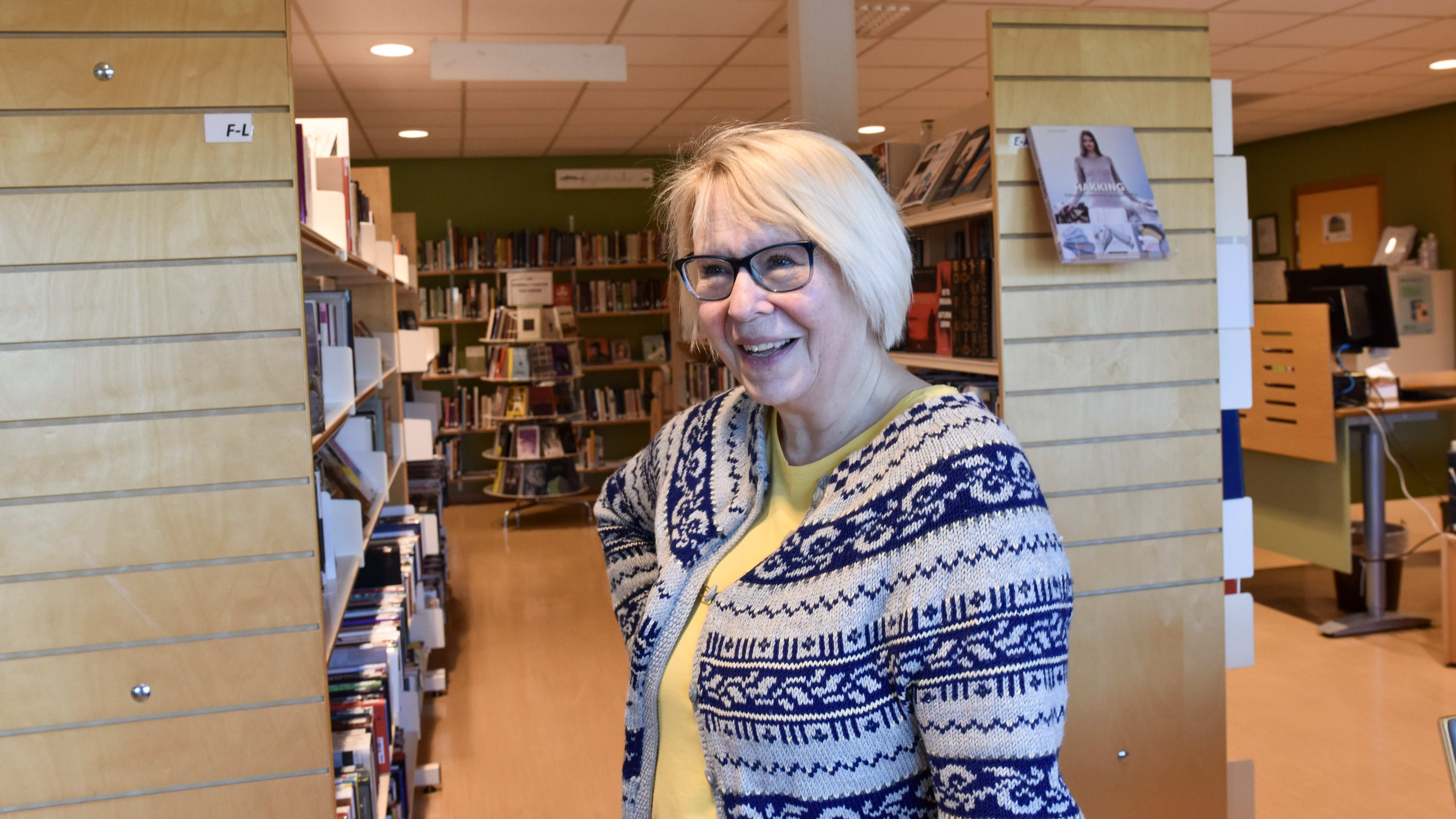
While other municipalities in Norway struggle to keep their libraries open, you can pop in to have a literary chat with library director Hildegunn Eek on any weekday.
The library is a combination library, serving both the population and the school. It is open nearly every day of the week. All Norwegian municipalities must have a school library, separately or in cooperation with another municipality. That is the law.
“A municipality is a municipality, regardless of size. Utsira municipality must deliver the exact same legally required services as other municipalities. The tasks are the same but the scale is smaller.
“We have to deliver the same as for instance Haugesund, across the ocean with its 40,000 citizens,” says Tommy-René Stordal, Utsira’s municipal director.
Knowing a little about a lot
Stordal is a newcomer. He started his job as municipal director on 1 October 2024.
“It is an exciting position in an attractive municipality,” says Stordal when asked about his motivation to apply for the post.
Working in a small municipality is different from working in a larger one, according to Stordal. You fill more roles and must be more of a generalist. He is also the municipality’s HR manager.
He has been well received as a newcomer.
“These are good and friendly people to work with, which is important in a small place. I am very happy here,” he says.
At the end of the working day, when he leaves the town hall, the municipal director feels people treat him as anybody else.
“Everyone knows who I am and what my role is, but nobody talks to me about it when I’m off. That is pretty unique,” he says.
Depends on regional cooperation
The municipal director is keen to make sure that the municipality delivers good basic services, like provisions for children and cultural offerings. Other services, like waste management, can be done in cooperation with other municipalities in the region. Large and small municipalities in Haugalandet district work well together.
“We benefit from each other. Both large and small municipalities gain a lot from this,” says Stordal.
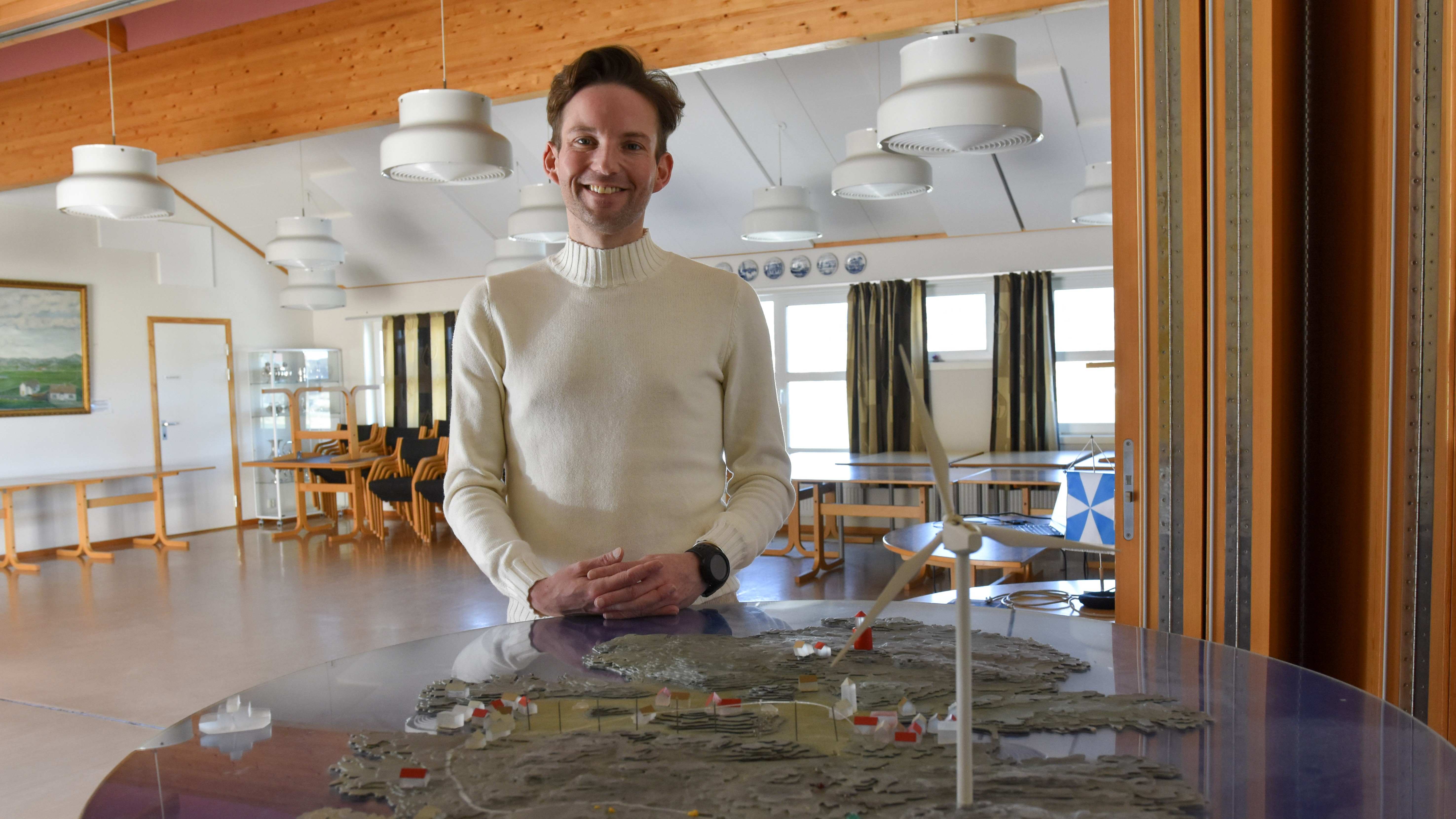
Municipal director Tommy-René Stordal believes it is important to deliver good-quality basic services to residents.
The municipality is the island’s largest employer by far with 41.8 full-time equivalent positions.
For big and small
While Norwegian municipalities are struggling economically, Utsira is an outlier. They have managed with what they have got. The first time Utsira municipality took out a loan was in 2011, to build the new school.
The first time Utsira municipality took out a loan was to help build Siratun in 1984. The next time was not until 2011 when they were going to build the new school.
Sirakompasset is right behind the municipal hub Siratunet. This is where the kindergarten, primary and secondary schools, after school club, adult education and culture school are housed.
Right now, there are 25 pupils in total. They are divided into three classes; years 1 to 4 and years 5 to 7 are together and the secondary school pupils are all in one class. There are six teachers but the school employs more than 10 people in total.
There are four positions at the kindergarten. The number of children fluctuates with different cohorts. Right now, there are only five. That is not quite enough, according to the staff.

It is important to recruit young workers to the island, believes Julia Faldt Faurholt (centre). Here she is with her colleagues at the school, Lyndsay (left) and Janne, in the teachers' room at Sirakompasset.
Julia Faldt Faurholt works in the kindergarten. She is also the trade union representative for the Norwegian Union of Municipal and General Employees.
“We are a small kindergarten but we achieve a lot. We have a lot of time for each child and for the parents,” says Faldt Faurholt.
She originally comes from the island of Læsø, Denmark’s smallest municipality. When she moved away at a young age, she promised herself that she would never again live in a small society.
“It was not for me when I was young. I needed more space,” says Faldt Faurholt.
When she graduated and started looking for a job, she arrived on Utsira via a recruitment agency. Lesø has an ageing population but Faldt Faurholt says Utsira is attractive for young people and that the community keeps developing.
Now she lives on the island with her partner and three children.
“It is safe growing up here. The children learn from an early age to look out for each other and live in nature.” Faldt Faurholt says she has found peace on Utsira.
“I can live here with a sense of calm. We are privileged,” she says.
Are small municipalities sustainable?
More than once, questions have been raised over whether small places like Utsira should really be allowed to be municipalities. Should Norway pay the cost of having small municipalities with only five children in the kindergarten?

Right now, there are five children in the kindergarten. Only a few years ago, there were 16.
People on Utsira have fought several times to maintain their municipal status. They have won every time.
“I feel there is a will to maintain small municipalities like Utsira. It adds value for Norway to have an island society out at sea,” says the mayor.
Why is that important, we ask her.
“We have a deep passion for our island and want to be involved in shaping the local community,” says Marte.
She struggles to see a merger with for instance Haugesund. Studies have also shown there is little to be gained economically by merging the two municipalities.
“Utsira would become just one of many posts on the budget. The society would struggle to flourish and we would always lose,” believes the mayor.
Very willing but few succeed
To survive over time, however, the municipality must have more to live from. Not everyone can be a municipal employee. The place is practically crying out for more private businesses.
Over the years, there have been many plans, big and small, to create jobs. But often, they have remained just plans.
Right now, the biggest plans are floating wind turbines at sea (the Utsira Nord project), traditional fish farming at sea (the company Mowi has been granted a license) and there are plans for a land-based fish farm.
The latter is controversial, but this is also the project that promises the most jobs for the island. There is a lot of talk about more tourism initiatives too.
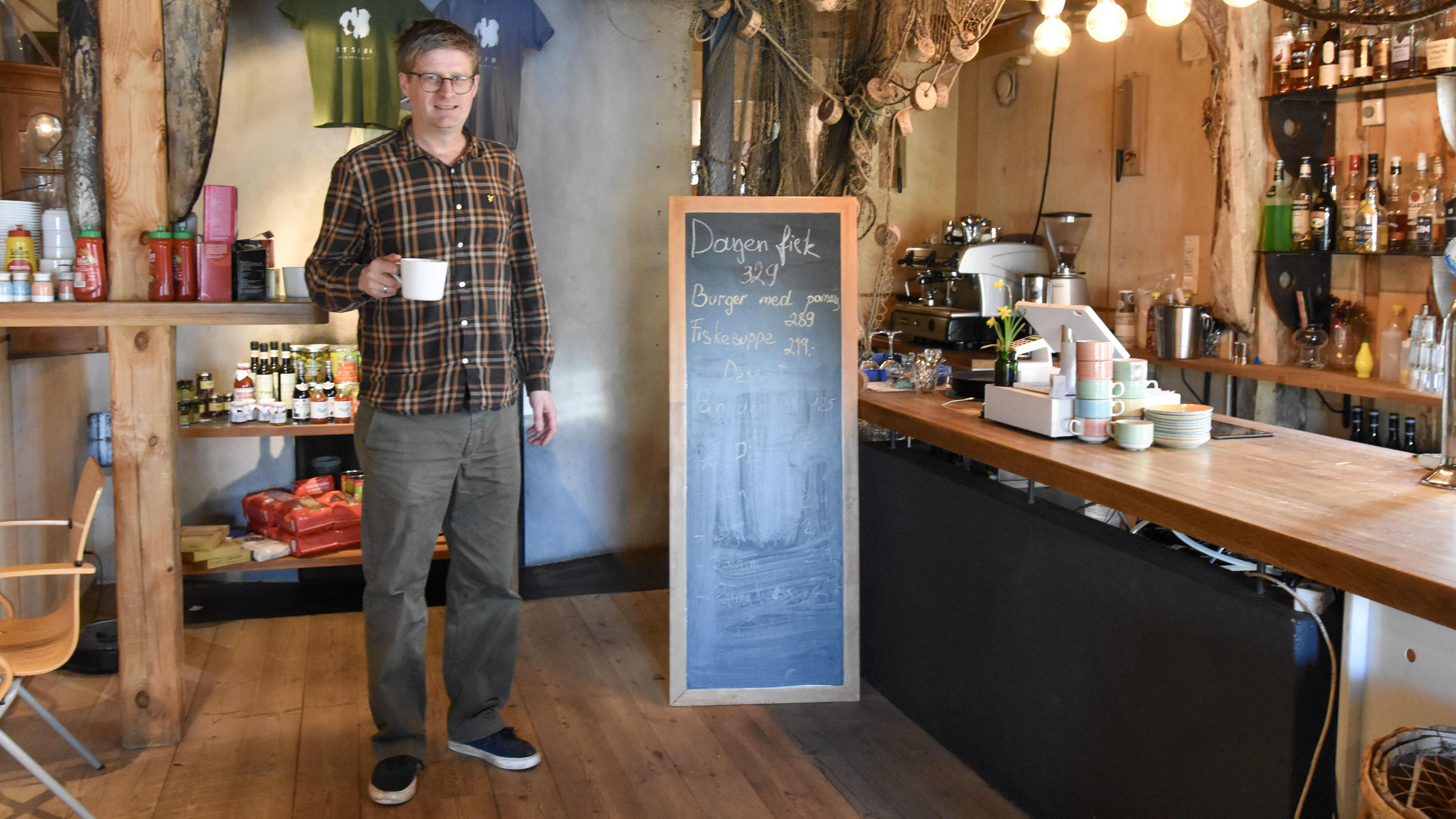
Anders Myklebost is one of several tourist industry workers. He believes in marketing Utsira as a green, sustainable island.
In Nordevågen lies the local pub and restaurant Dalanaustet. We meet Anders Myklebost who has been running the place for the past ten years. He is originally from Sandnes and is also the chairman of the Utsira Business Forum.
“If you run a business out here, you cannot stick to one thing only. You have to be a jack-of-all-trades to make ends meet. You must be the caretaker, accountant and host all rolled into one.”
Dalanaustet is more than a pub and eatery. It serves as a cultural venue, meeting room and more. The building is originally from the 1800s and was renovated with support from the municipality, the county council and Innovation Norway, and it had several owners before Myklebost took over.
“It takes time to build something up out here,” he says.
Myklebost believes there is scope to grow tourism, but at a sustainable speed to avoid having too much, like what has happened in Lofoten.
“It’s a balance. The ferry is our bottleneck and relief valve. A full boat in the summer means our capacity is maxed out. We have to make sure guests and residents have a good experience.”
A small, green island
Myklebost believes Utsira can put itself on the map as a green, alternative island. He is sceptical to some of the big industrial projects being considered, including the plans for an onshore salmon farm. He thinks that could be detrimental to the tourism industry.
He points out that experience shows big undertakings do not necessarily lead to more permanent residents or more children in the kindergarten.
“Perhaps we should create five jobs here and now and develop these,” he says.
Myklebost is more pragmatic when it comes to offshore wind power. This will be decided in Oslo and not on Utsira. But if floating wind turbines appear in the sea, he is in no doubt:
“Sunsets from the Utsira lighthouse will never be the same! But floating wind power will not have an irreversible impact on nature. For us, this is about securing local value creation – taxes and jobs that will actually benefit our local community.”
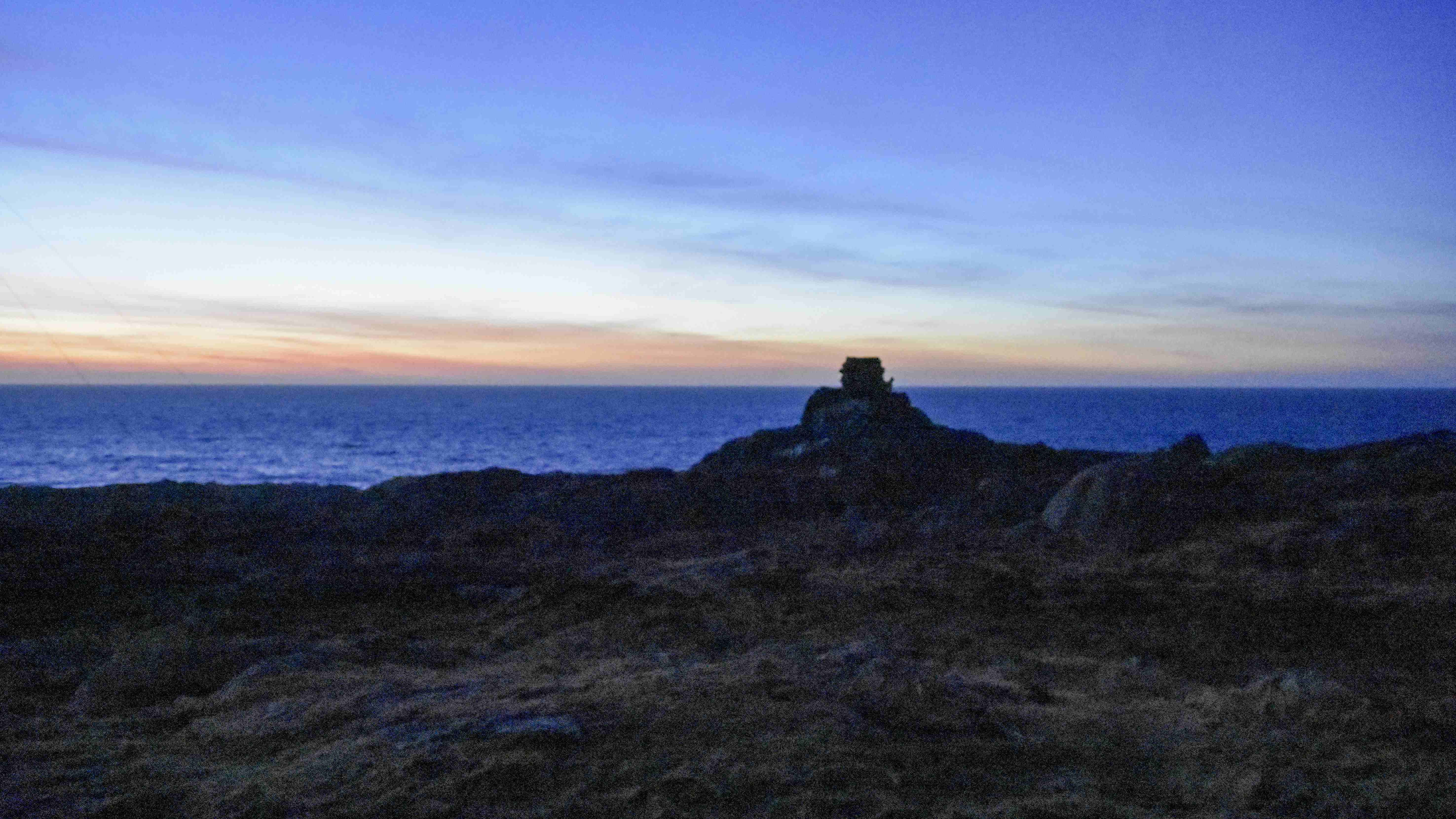
If plans for floating wind turbines become a reality, the view will be different from today.
He points out that there is a high barrier to moving to the island if you have no permanent job or a network.
He is a newcomer himself. He is married to the mayor. It is a small place. Which is mostly for the better, but sometimes for the worse.
Preparing for generations to come
Back at the mayor’s office at the town hall, mayor Marte Eide Klovning says the dream for a small municipality like Utsira is indeed to have a cornerstone business that brings tens of jobs, securing growth and tax revenue.
“It is hard to say no to something that promises a lot of jobs, but we also have to ask ourselves: What is our breaking point as a society?”
The mayor and municipal director underline that Utsira municipality is in no way desperately looking for something new.
“We can run this municipality for many years still. But at some stage, we have to find something else to live from. We have to create opportunities for businesses and not only prepare to be preserved. We cannot become an institution out in the middle of the sea,” says municipal director Tommy-René Stordal.
Fourth generation merchant
Talking about institutions – some might call the local shop Joker Utsira exactly that, but in a positive way.
The café at Joker is a popular meeting place, especially on the darkest and windiest winter days.
On this Monday, the sun is shining from a blue sky. And high up on the flag pole outside the shop is – a Newcastle flag!
A brief explanation: Merchant Kjetil Klovning is a committed Newcastle fan. The day before, his club won the English Cup finals beating Liverpool 2-1. Newcastle had never before taken that trophy home.
“Are you going to see Kjetil? Well, he’s in a very good mood today,” people tell me. Of course, “everyone” knows that the island’s merchant is a Newcastle fan.
“YEAH!,” shouts Kjetil, dressed in the right colours of course, when he is congratulated on the victory.
Joker Utsira is the island’s only shop and, for now, the biggest private company. It has four full-time equivalents spread across seven to eight people.
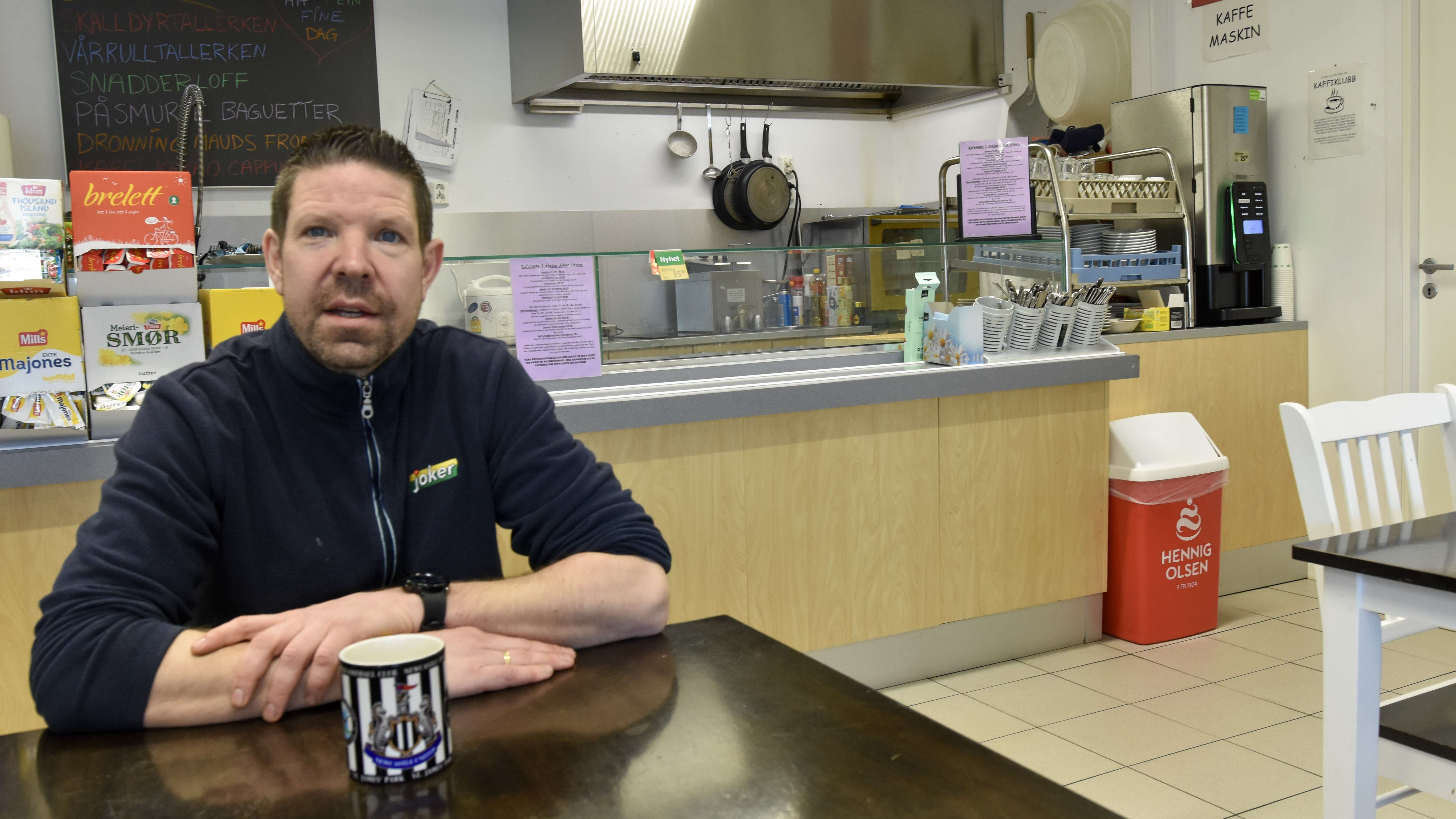
Kjetil Klovning is a fourth generation merchant on Utsira. He was never in any doubt, he would take over the shop when his farther retired.
“We desperately need private businesses. There is always something brewing, but it rarely leads to anything. It is hard to run things on Utsira partly because everything is more expensive here,” he says.
Klovning is a genuine Sirabu, as locals are known. He was never in any doubt that he would be a merchant.
“No, no, no, I never doubted that. I already knew when I was around four, following my father around the shop. It’s in my blood. I am the fourth generation. My great-grandfather set up shop in 1936.
“I’m not doing this to get rich. It’s no gold mine. I do it because it is my passion and because it is rewarding to be part of developing Utsira as a municipality and tourist destination.”
Tourism is important to Utsira’s economy, especially overnight tourism which brings money into the coffers. The season runs from Easter until October. Klovning looks forward to it.
But most of the year consists of ordinary working days.
“The residents are very loyal. They are the backbone for our shop’s revenue.”
It is not surprising, says Klovning, that residents also do some of their shopping on the mainland.
“I can’t shout at the neighbour because he buys some loo rolls at OBS on the mainland. At our shop we have to concentrate on doing our job and be good at what we can offer,” he says.
Too high a price to pay?
Klovning says goodbye to a colleague who leaves work a bit early this Monday. The colleague has to catch the next ferry to the mainland.
And when the ferry leaves the dock, there are more cars and passengers onboard than when we arrived on the island the day before. In the lounge, young boys sit on chairs tapping on their mobile phones.
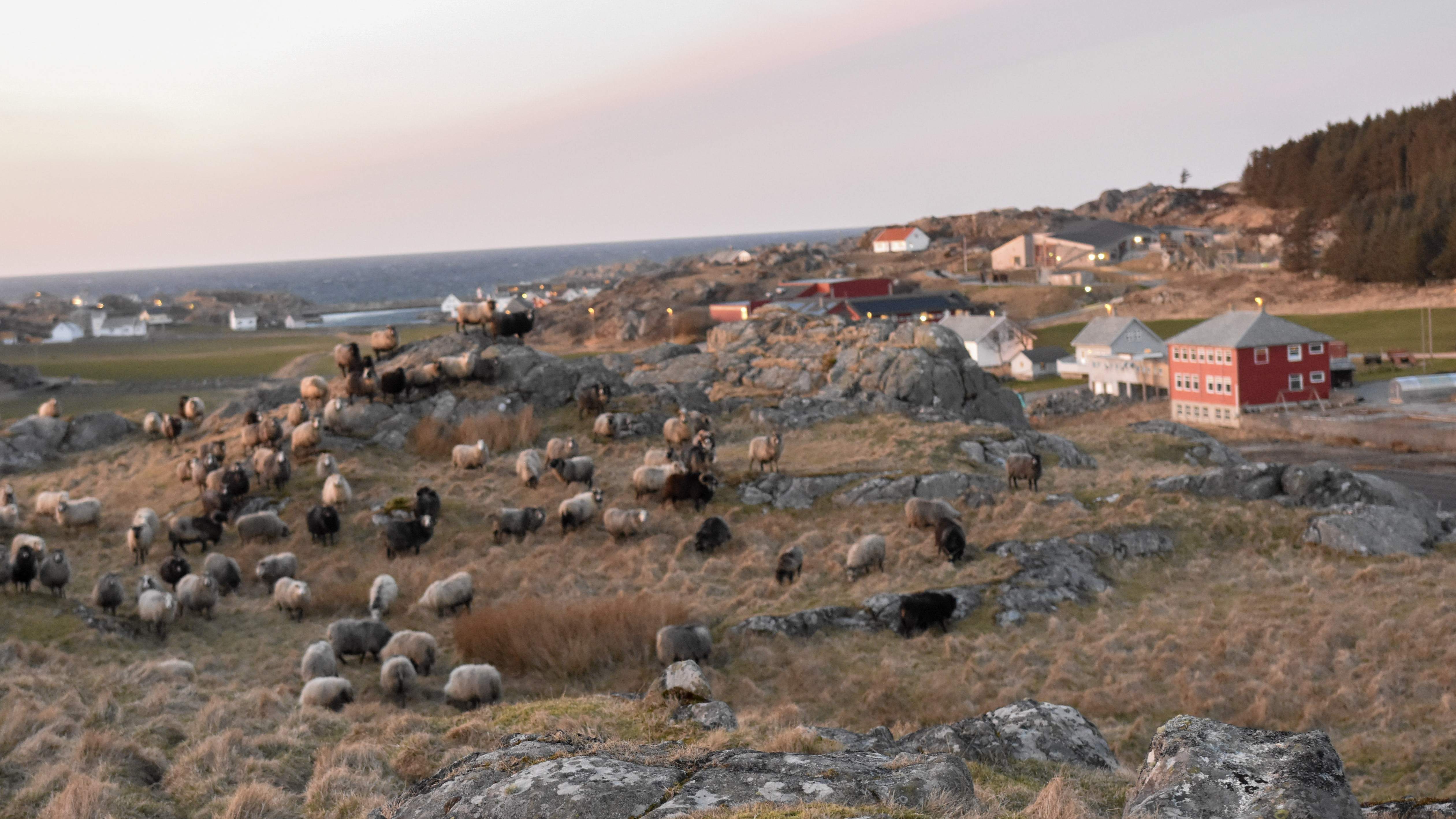
Fishing and smallholdings are still part of the economic foundation on the island of Utsira.
They are going to the mainland for football practice. Mayor Marte is one of several parents driving the boys to practice on this day. When practice is over, they travel back across the sea to the island of Utsira.
This is the price you pay for living on an island with no mainland connection. People who live there will tell you it is worth it.
- Little and happy
-
The sun is shining and it is time to play out for Florinda, Sofia og Nora at the Sirakompasset kinderkarten on Utsira.
- Municipalities in Norway
-
- There are 357 municipalities in Norway (on 1 January 2024)
- Oslo is the largest municipality in terms of population with 717,710 (2024).
- Utsira is Norway’s smallest municipality in terms of population with 217 residents (2024). It is an island and a municipality in Rogaland County. Utsira lies in the North Sea outside Karmøy, 18 kilometres west of Haugesund.
 Follow us on Facebook
Follow us on Facebook
